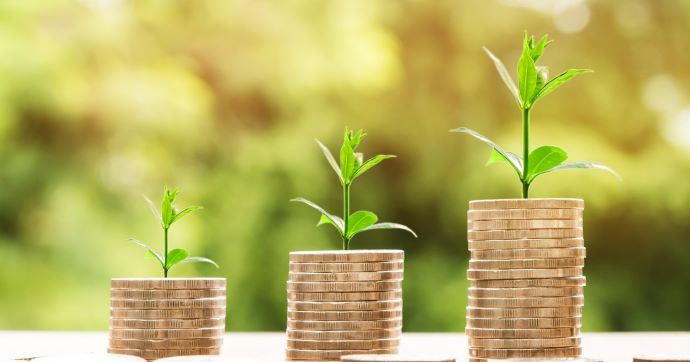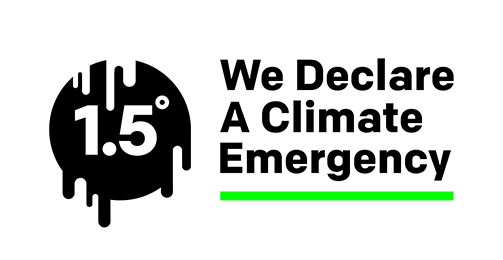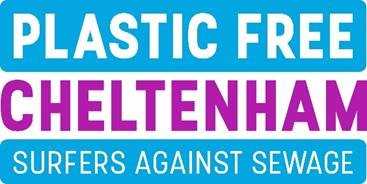Send a message 0333 344 5890 |
- Home
- Knowledge
- Learning Hub
- What is the cost of going green for businesses?
What is the cost of going green for businesses?
|
This must be one of the most common questions I get asked and it comes from our experience as consumers, that the "green" product always seems to be more expensive than the "normal" one. I have to tell you that this is not necessarily the case for businesses at all, and over the course of this article I want to try to persuade you of three things:
|
Going green may cost less than you think
The first thing that often comes to mind when we think about "going green" is changing the products that we buy to "eco friendly" versions. Undoubtedly, the choices we make when purchasing products and materials have an impact on the environment but if we think a bit deeper there are many things we can do that will cost no more or may actually save money. Let's investigate some of them:
1. Buy less
It might seem an obvious thing to say, but it is amazing how wasteful we can become in our efforts to make life easier. Buying less of the things you need will not only reduce your use of the world's resources, it will also reduce the amount of waste you generate and reduce your carbon footprint. Here are some examples of ways to "buy less":
- Reduce energy consumption.
Make sure that lights, computers and anything else electrical is switched off when they are not being used. When you buy new equipment or appliances make sure you buy low energy models. Everyone needs to be comfortable at work but could the thermostat be turned down.
- Keep tight control over inventory.
Stock sitting on the shelf isn't doing anything useful and isn't earning you money. Making anything takes carbon and making sure you only buy the amount you really need will reduce your carbon footprint and help your cashflow.
- Buy in bulk when it makes sense
This might seem an odd thing to say after the previous point. However, buying in bulk generally means you will be receiving less packaging, that will ultimately end up as waste, and may get a lower price per unit. The key is to take the time to understand what stock levels you need and the buying options for each item so that you maximise the opportunities to buy in bulk when you can or to choose not to buy in bulk, if the stock is going to sit on the shelves for months and maybe eventually thrown away to create more space.
- Keep an eye on all those software subscriptions.
There is a tendency to think that software is energy free, however today's cloud-based systems are running on servers on the internet which are all consuming electricity. Data centres are the fastest growing source of carbon emissions in the world and it is so easy to sign up to those free offers and to forgot to cancel subscriptions that are only a few pounds per month. All those subscriptions add up however, both in terms of money and carbon. So, it's worth periodically checking through all your subscriptions and cancelling the ones you no longer need.
2. Reduce waste
Anything you can do to reduce waste helps reduce the burden of resource use on the planet, reduces your carbon footprint and saves you money.
- Be systematic and get all your employees involved
Effective waste reduction means being systematic and relentless about identifying and eliminating all forms of waste. It is often best identified by the people doing the job, so get your employees involved, reward or celebrate their successes, maybe even turn it into a game. Done well, waste reduction can become addictive.
- Get rid of single use "anything"
There has been a lot of focus on the drive to ditch single use plastic. The truth is however, that single use anything is a waste of resources and often the materials used to replace the plastic are no better or even worse for the environment than the plastic. What is needed is a mindset shift away from single use to reusable materials. Although these may be more expensive to buy initially they often save money over the long term. You may even be able to sell them to your customers for a higher price.
- Get your customers involved
This may also be an opportunity to get your customers involved in your efforts to go green. Can you get your customers to bring back their packaging when they have finished with it? Could you offer a refill service? Could you handle difficult to recycle waste on behalf of your customers? The businesses that do this often find that their customers love it and it is a great way to build your reputation and their loyalty.
3. Buy better
The things you buy and where you buy them from does make a difference. Sometimes being green will mean buying a product which is less toxic, uses recycled or renewable materials or is itself recyclable or reusable and as a result which may be more expensive. However, there are also sometimes ways of buying better that will save money:
- Buy better quality
Buying better quality tools and equipment is likely to mean that they last longer and are more repairable. Although they may be more expensive to buy this will likely save money in the long run.
- Buy local
Buying local may not allow you to find the absolutely lowest unit cost but could well save money on transportation and delivery. As we have discovered during Covid and Brexit global supply chains are more easily disrupted and you cannot sell a product you do not have regardless of how cheap it is, so buying at least some of your materials locally may make your business more resilient to circumstance that are outside your control too.
- For food businesses, buy less meat and more vegetables
The evidence is now clear that meat and dairy have a significantly higher carbon footprint than plant-based items. There is a distinct hierarchy to this; red meat (beef and lamb) is the highest, then pork and cheese, followed by chicken. Vegetables all have a significantly lower footprint regardless of where they come from (as long as they are not air-freighted). Whilst plant-based meat imitation products may be expensive, raw vegetables used as an ingredient are generally much lower cost than meat and cheese. So, getting more creative with your menu planning, and increasing the proportion of vegetables to meat/cheese could lower your costs, reduce your carbon footprint and respond to the growing trend for consumers to choose plant-based food.
Some green "costs" are actually "investments"
One of the off-putting things about going green is that it seems to be all "spend, spend, spend". You need to buy LED lights, you need to switch to expensive green energy tariffs, you need to install insulation to save energy, you need to shell out thousands on solar panels.
The beauty of energy-saving measures like these is that, although there is an upfront capital cost, there are often immediate savings in operational costs. This means that if we rethink these costs as investments a return-on-investment calculation can easily be done. Often these returns look attractive from a long-term point of view, for example:
- LED lighting often has a payback period of less than 12 months
- Solar PV often has payback period around 7 years
Additionally, in recent years there has been a growth in finance options for energy saving technologies so often they can be installed with no upfront capital outlay at all.
One of the key elements to going green is a shift from short-term to long-term thinking. When you do this it allows you to reframe some of your "costs" as "investments" which may enable you to ultimately find significant savings in the long-term.
"Green" is a growth opportunity
It is easy to get so hung-up on the costs of going green that we forget the many benefits. Arguably the biggest benefit now is the opportunity to grow your sales significantly. There are 2 key ways that this can work:
1. Customers increasingly want to buy green
- A 2019 study by Nielson found that 73% of global consumers would definitely or probably change their consumption habits in order to reduce their impact upon the environment.
- The 2016 B2B Pulse survey by Shelton found that 77% of business decision makers stated that a supplier’s environmental performance or sustainability record is an important factor in product selection, with 57% including sustainability-related questions in their purchasing Requests For Proposal.
- The NHS have stated that by 2030 all their suppliers must be committed to net zero carbon emissions.
- According to the 2018 Ethical Consumer Markets Report by Triodos Bank, the UK ethical market is now worth over £83bn and growing
This means that there is a window of opportunity for businesses to gain a competitive advantage by embracing green now. This competitive advantage could lead to an increase in sales that dwarfs any extra costs involved:
- In 2019, Unilever announced that its purpose-led, Sustainable Living Brands are growing 69% faster than the rest of the business and delivering 75% of the company’s growth
2. Turning products into services can increase profits whilst reducing consumption
The "servitisation" of products is now a huge market trend, but what does it mean in practice? Here are some examples:
- Leasing products instead of selling them.
This works particularly well for high value capital items and has big cashflow advantages as well as the opportunity to make more profit over the long-term.
- Short-term hire or Sharing business models
Instead of selling your products you allow your customer to share the use of them. This works particularly well for items which do not need to be in constant use. Car clubs and tool hire are good examples.
- Maintenance contracts
Offering services to upgrade, repair and service your products can be a way to increase your profits per item sold and elongate their working life leading to a lower environmental footprint overall. It may even be that the product comes "free" (all the costs are wrapped up in a single service agreement).
All of these are ways to increase your profit whilst making and selling fewer things. When done well you should be able to deliver a better customer experience too.. This is a win-win-win for your business, the planet and your customers.
In conclusion
I hope I have persuaded you that a concern over extra costs should not be a reason for businesses to put off going green. On the contrary there are many ways improve your financial position in the process of going green.
Contact us today for advice on how to make "green" cost less than you think; on turning green costs into investments; or on driving green growth.
Written by Eoin McQuone

Eoin (pronounced like "Ian") is the Chief Carbon Coach and founder of Go Climate Positive. He is a Practitioner member of IEMA (the Institute of Environmental Management) and a sustainability lead on the Cheltenham Economic Recovery Task Force.
Eoin says, "Sustainability is no longer a 'nice to do', it is business critical. My goal is to make it accessible and affordable for every business, however big or small , no matter their market sector."





